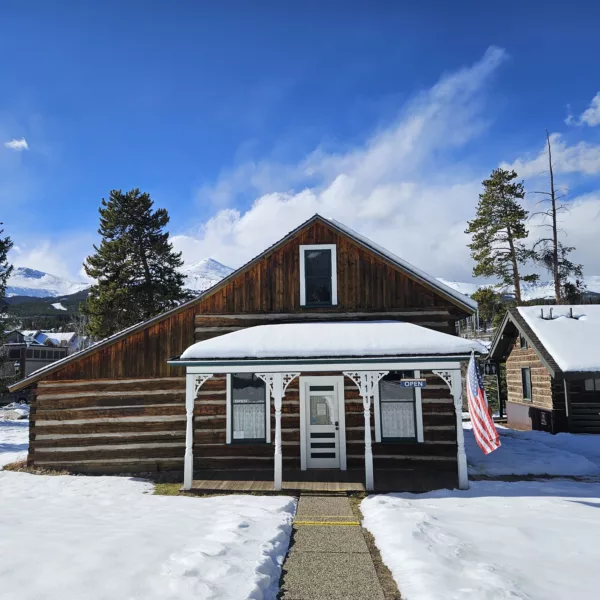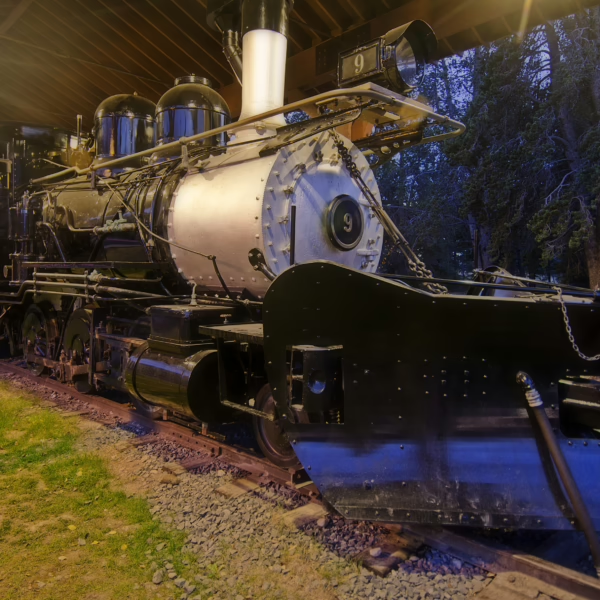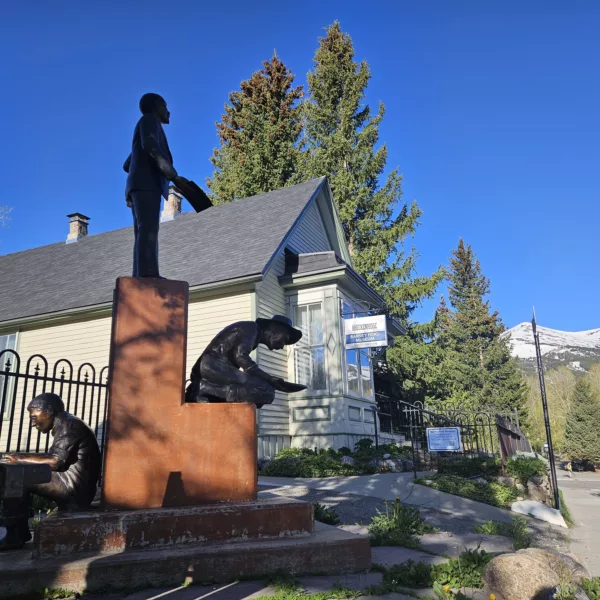A Community Interred: Historic Valley Brook Cemetery in Breckenridge
October 04, 2021 | Category: Making History Happen

A cemetery shares the stories of its community. Potters to prominent citizens, epidemics and accidents, population surges and declines, alliances and foes, trends and tales are all told in Breckenridge’s historic Valley Brook Cemetery. Learn about Breckenridge’s history revealed in the graves of those who lived it on a walking tour of the cemetery with the Breckenridge Heritage Alliance.
Valley Brook reflects Breckenridge, then and now. A community is interred here and the people therein tell Breckenridge’s history in their gravestones, symbols and placement in the cemetery. Valley Brook remains an active cemetery, where new Breckenridge mingles with the old.
The oldest burial dates from 1876 when infant Yingling was laid to rest in the Catholic section of what would soon become Valley Brook Cemetery. Rounding up graves and remains from scattered cemeteries around Breckenridge, Valley Brook formally started in 1880 when William McAdoo allowed the growing mining community to establish its cemetery on his Masonic Placer. Finally in 1896, McAdoo accepted payment for the grounds, solidifying the cemetery’s permanent location. Ideally located outside of town and downstream from the water supply, Breckenridgians welcomed Valley Brook.
By the late 19th century, people across the United States sought a park-like experience for their burial grounds. To remember and honor the dearly departed, the living gathered with picnics in graveyards. As a result, Valley Brook reflects the trend of cemeteries as attractive places to spend time, whether briefly or eternally.
Laid out in the shape of a Celtic cross, Valley Brook’s plots are accessed by circular carriageways, alleys and roads named for local wildflowers and trees. In the spring, the first purple pasqueflowers bloom brightly, followed by an abundance of wildflowers throughout the summer, creating the feel of a contemplative garden. Anchoring the entry to the cemetery is the Sexton’s House, built in 1901 for the caretaker of the graves. Arching over the entrance, a graceful sign separates the living world from the departed.
Within the cemetery, grave markers reveal so much more than name, birth and death dates. Headstones tell of personalities, passions, professions and intimate details of life. Association with fraternal orders, military service, religious affiliation, and family relations are indicated on many gravestones.
As in life, the buried dead in Valley Brook gather with friends and allies. Various areas are dedicated for fraternal organizations, such as the Grand Army of the Republic, Kiowa Tribe 6, Independent Order of Red Men, International Order of Odd Fellows, Knights of Pythias, and others.
Occupying the large southern section, the Masons rest in the best real estate in Valley Brook. The Engle family, prominent citizens with descendants still living in Summit County today, abide in the southeast corner of the Masonic section. Cucumber Creek softly rushes nearby and the site is visible to the carriageway that passed the cemetery. On what we call Airport Road today, family members would ride by in their carriages to view and acknowledge the deceased. Nearby are Engle family friends, the Yusts.

On the opposite side of the cemetery lies Bob Lott, interred in the Potter’s or Pauper’s section. It is not known if Bob was a pauper, but he was an African-American man, and thereby relegated to the Potter’s Field. The rules of the time forbade minorities in the cemetery. Yet Bob was so well regarded in Breckenridge that his friends found a way to make an exception. His resting site is marked with one of the few headstones visible in the potter’s field, remembering Bob as “a loyal citizen and faithful friend.”

Many children and babies are interred in Valley Brook. A wire bassinet surrounding a grave site marks the site of a baby. A lamb atop a grave marker indicates a young child. Epidemics, including scarlet fever and influenza, took many children. Emma Roby and Helen Remine died within days of each other in the 1897 diphtheria epidemic and are buried together. Nearby, Maggie Remine’s marker with clasped hands indicates friends forever.
Breckenridge’s history of boom and bust plays out in the Tressler family plot. James Tressler died in November 1897 at the age of 52. His wife Louise chose a plot that placed him near other esteemed families of the time including the Footes (Theobald) and the Torkingtons. Tressler was a merchant and miner of means and the plot reflects his standing in the community. Surrounded by an elegant iron fence, “Papa” James rests eternally, oblivious to the tragedies that would befall his family in the coming years.
In 1904, little Jimmie Tressler died of whooping cough and his mother was devastated. She began to liquidate her assets at this time, selling mining claims and other property in town. By 1905, Louise remarried, but the marriage didn’t last. In 1920 she is listed as Mrs. Tressler again, running boarding houses and taking in foster children. In 1928, her beautiful house burned down and a three-year-old foster child died in the conflagration. Mrs. Tressler, penniless, lived out her years on welfare and died in poverty in Breckenridge in 1940 at age 82. Her simple grave marker, a brass plate mounted on a rock, lists only her name and years of birth and death, using the fewest characters to save money. It contrasts with the opulence of her husband James’ marker. The Tressler family story of riches to loss and impoverishment is not uncommon in mining communities.
Today, Valley Brook remains a place where many Breckenridge residents want to be remembered for all time, to rest eternally in the softly beautiful valley of the Upper Blue River.
Gail, interpreter and docent for the Breckenridge Heritage Alliance, loves to tell the stories of Breckenridge through Valley Brook; “Our cemetery is like the play Our Town meets Christmas Carol on Halloween,” she explained. The Tombstone Tales Tour, typically offered June through October, includes highlights on Valley Brook Cemetery and Breckenridge history.
To learn more about Breckenridge history, visit the Breckenridge Heritage Alliance website to read blog and history articles, tour a museum, or join a guided walk or hike.
written by Leigh Girvin




